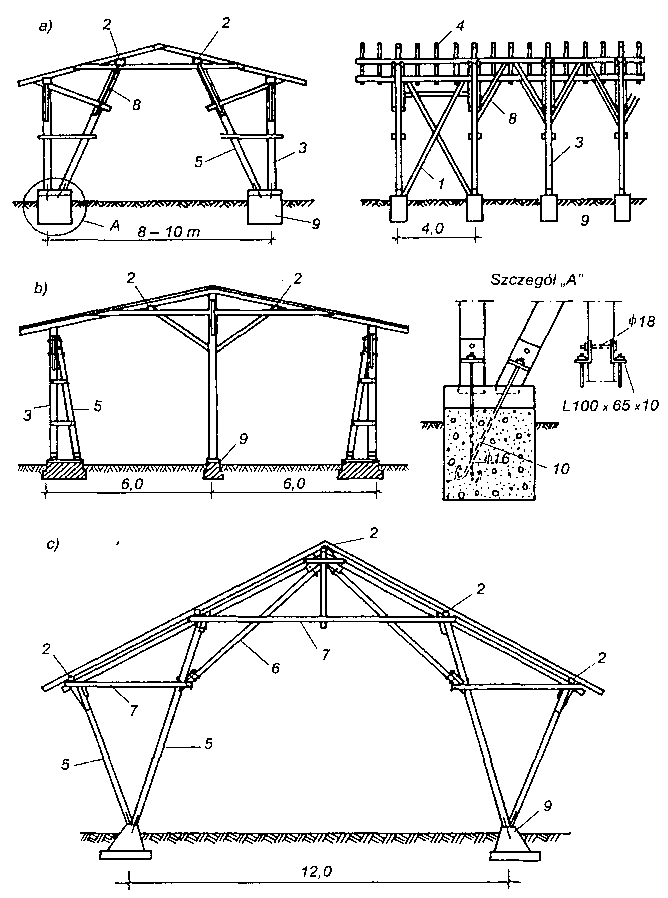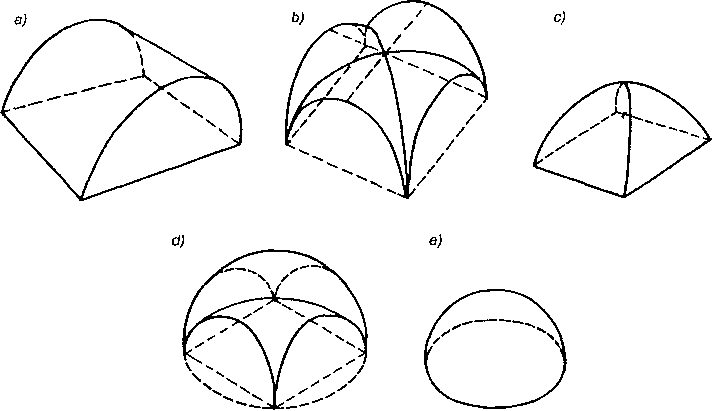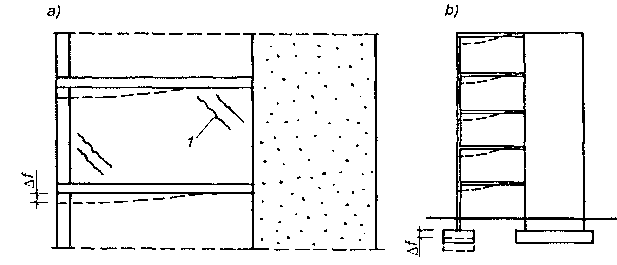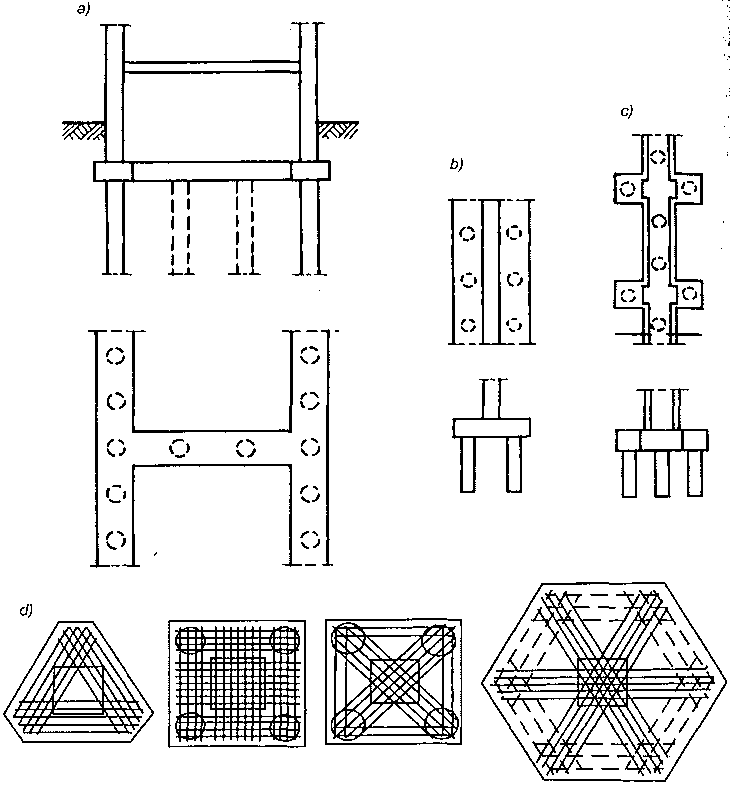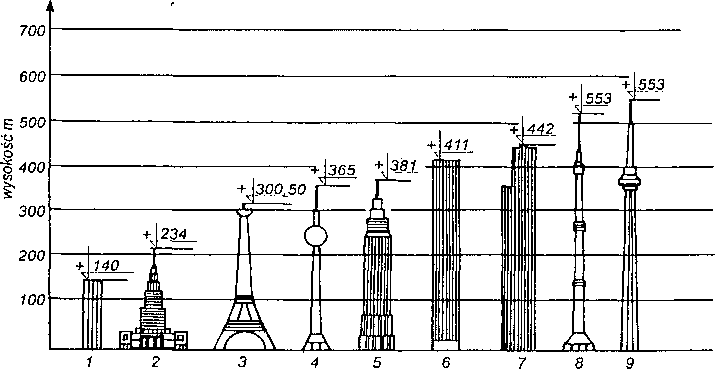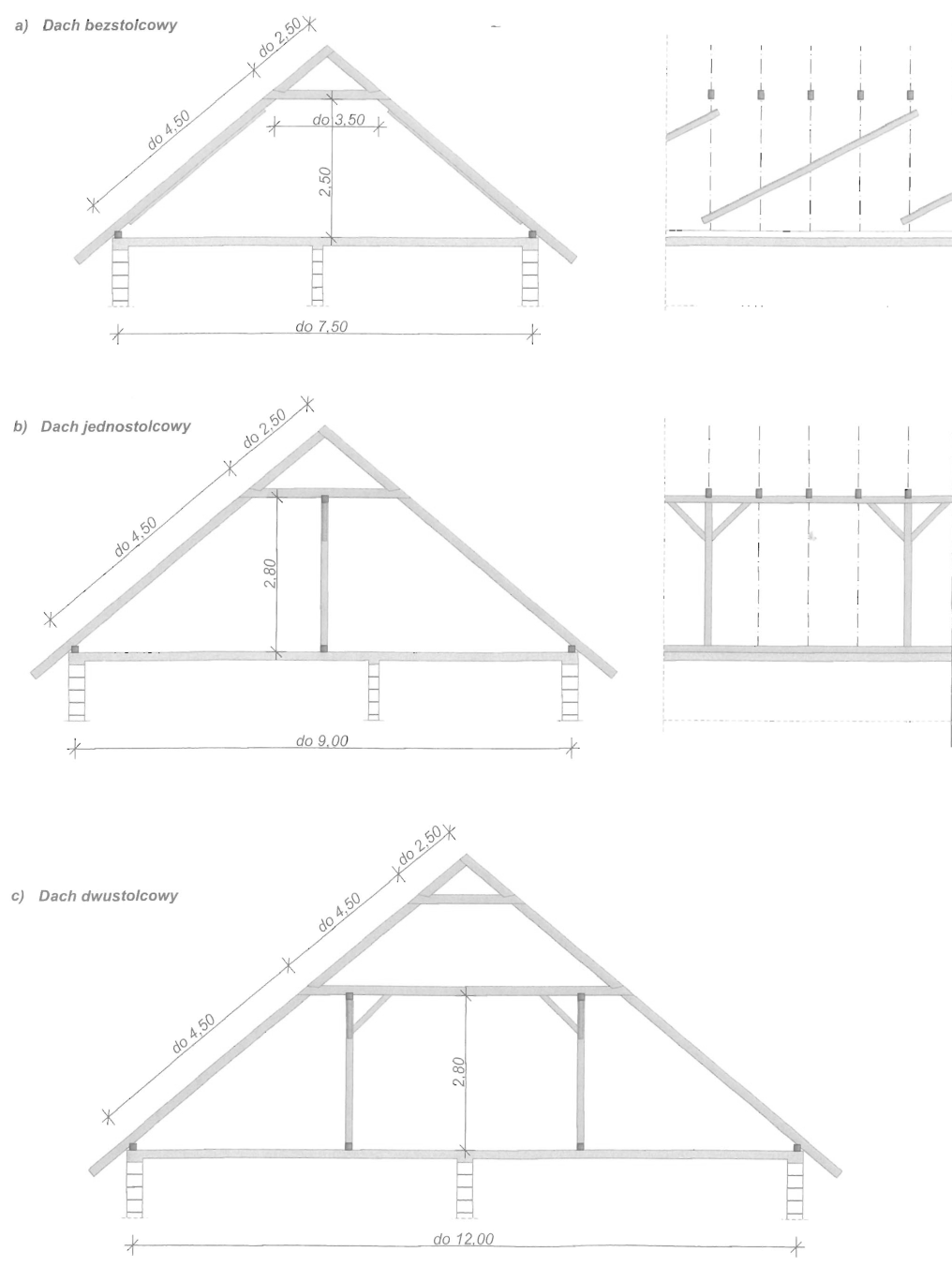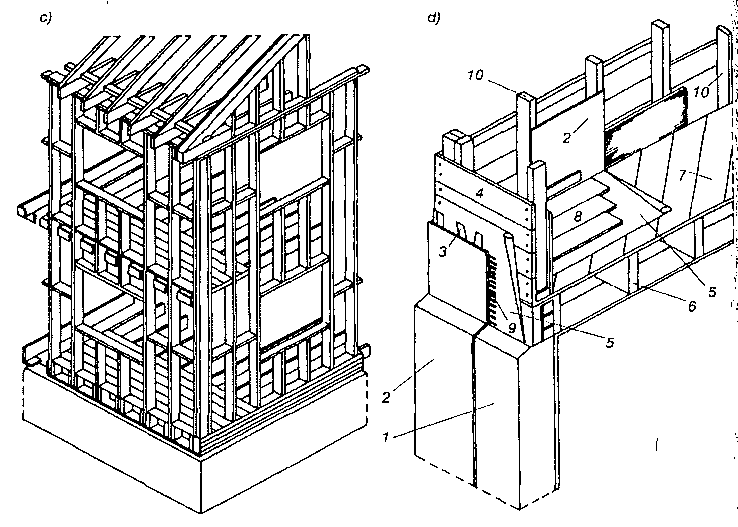Każdy budynek i budowla powinny być tak skonstruowane i wykonane, aby ich użytkowanie było pewne i bezpieczne. Od konstrukcji budynku wymagane jest spełnienie trzech warunków: wytrzymałości, stateczności i sztywności. Warunek wytrzymałości oznacza, że zarówno poszczególne elementy, jak i ustroje konstrukcyjne powinny z pewnym zapasem bezpieczeństwa przenosić obciążenia na nich działające. Warunek stateczności polega na tym, że budynek (budowla) nie ulega przesunięciu pod wpływem działania sił poziomych oraz nie doznaje obrotu. Oznacza to, że W < T oraz Mw < Mu. Moment utrzymujący Mu powinien być 1,5 raza większy od momentu wywracającego Mw. Warunek sztywności polega na ograniczeniu przemieszczeń pionowych i poziomych konstrukcji. Jako miarę sztywności przestrzennej budynku przyjmuje się zwykle wartość wychylenia bocznego.
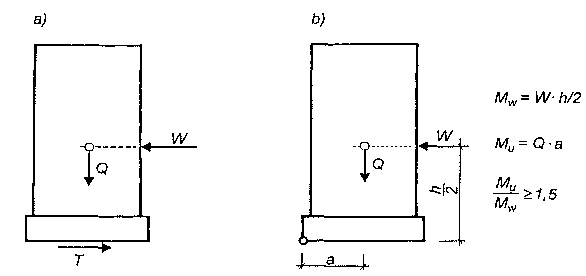 Stateczność budowli: a) na przesunięcie, b) na obrót.
Stateczność budowli: a) na przesunięcie, b) na obrót.
W budynkach ścianowych (drewnianych, murowanych i betonowych) sztywność przestrzenną zapewniają ściany ustawione poprzecznie i podłużnie do osi podłużnej budynku.
W budynkach o poprzecznym układzie ścian nośnych należy stosować ściany usztywniające ustawione w kierunku podłużnym, natomiast w budynkach o podłużnym układzie ścian nośnych rolę ścian usztywniających spełniają ściany poprzeczne.
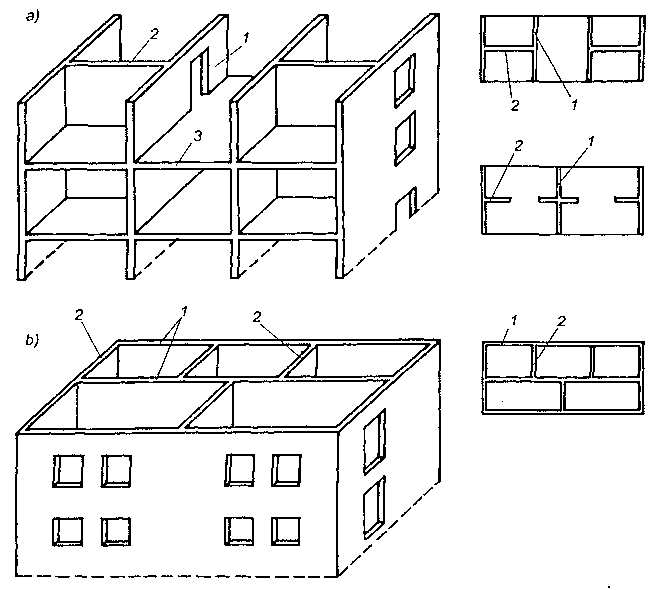 Ściany nośne i usztywniające: a) układ poprzeczny, b) układ podłużny; 1 — ściany nośne, 2 — ściany usztywniające, 3 — strop.
Ściany nośne i usztywniające: a) układ poprzeczny, b) układ podłużny; 1 — ściany nośne, 2 — ściany usztywniające, 3 — strop.
Ściany nośne i usztywniające łączy się zwykle ze sobą na całej wysokości budynku oraz ze stropami poszczególnych kondygnacji. Ze względów użytkowych w ścianach wykonywane są otwory drzwiowe lub okienne.
Ściany zewnętrzne budynku dzieli się na nośne, samonośne i osłonowe (wypełniające). Ściany nośne przenoszą obciążenia pionowe i poziome; obciążenia pionowe pochodzące od ciężaru własnego ściany oraz od stropów przekazują na fundament, natomiast obciążenia poziome przekazują poprzez stropy na ściany poprzeczne nośne bądź usztywniające lub bezpośrednio na ściany poprzeczne. Ściany samonośne pracują podobnie jak ściany nośne. Obciążenie pionowe pochodzące głównie od ciężaru własnego ściany przekazują na fundament, a poziome na stropy lub na ściany poprzeczne. Ściany osłonowe oraz wypełniające przekazują obciążenia od ciężaru własnego (pionowe) oraz poziome bezpośrednio na stropy lub rygle podłużne.
W budynkach szkieletowych sztywność przestrzenna może być zapewniona przez następujące ustroje konstrukcyjne:
a) ramy ze sztywnymi węzłami,
b) ramy z węzłami przegubowymi i tężnikami pionowymi oraz poziomymi,
c) ramy z węzłami przegubowymi i ścianami,
d) ściany usztywniające lub trzony.
Mogą być również stosowane ustroje usztywniające mieszane, np. ramy i ściany lub ramy i trzony.

